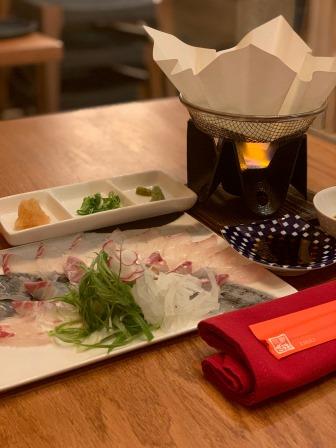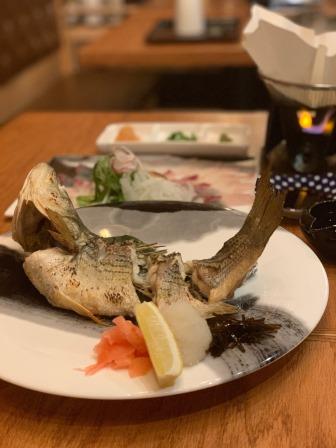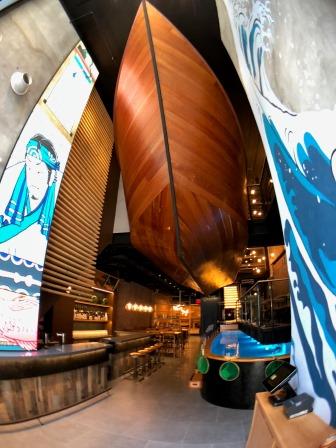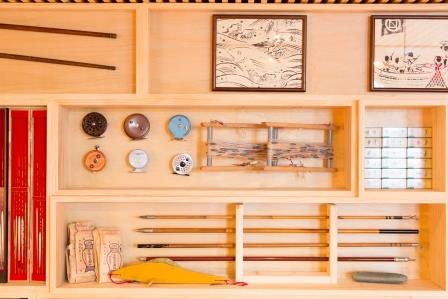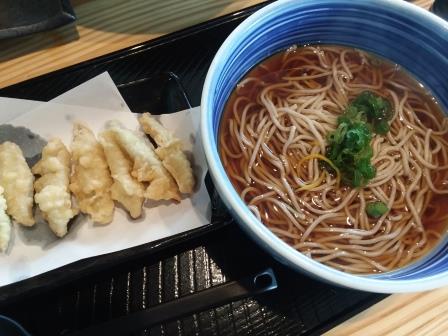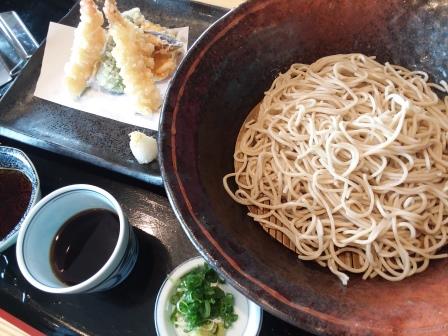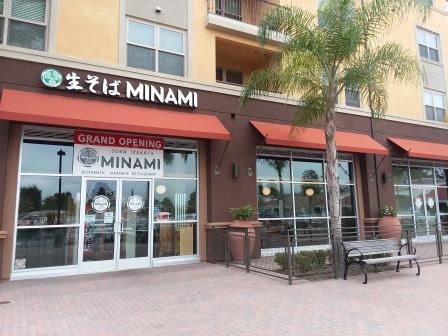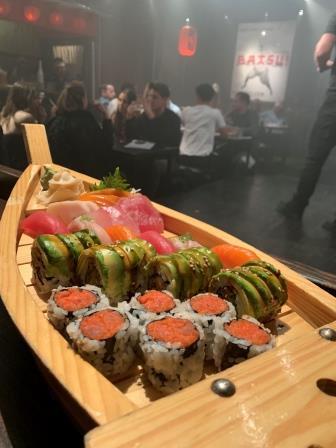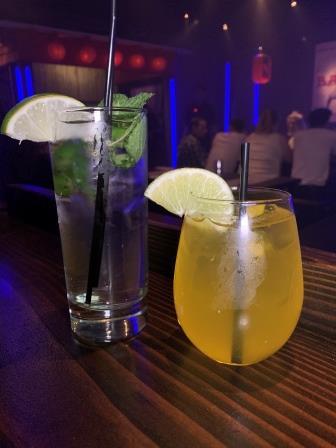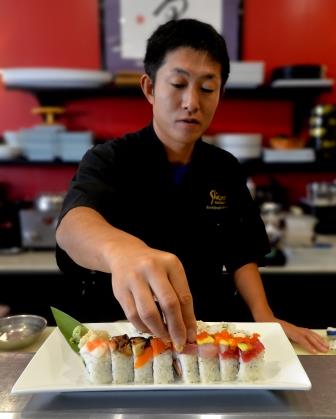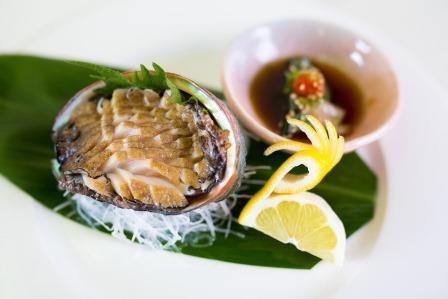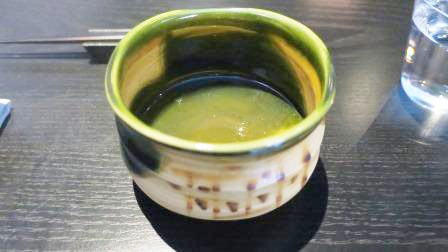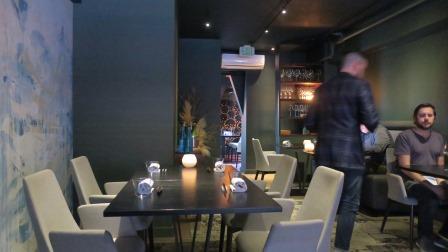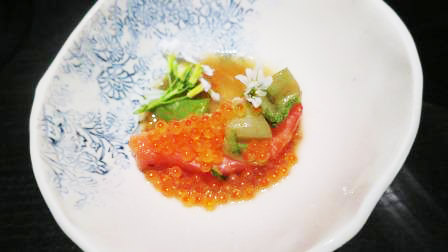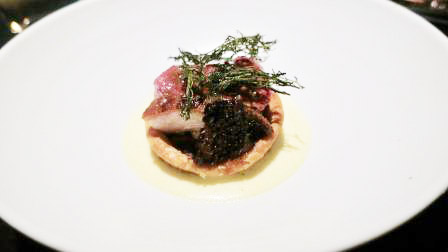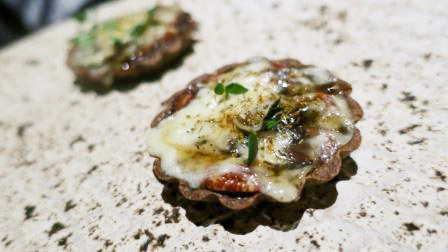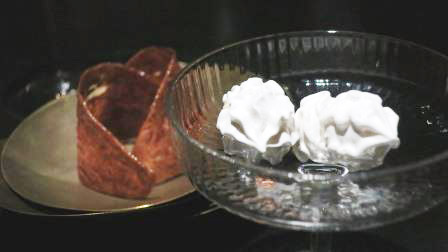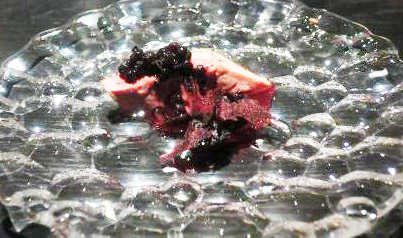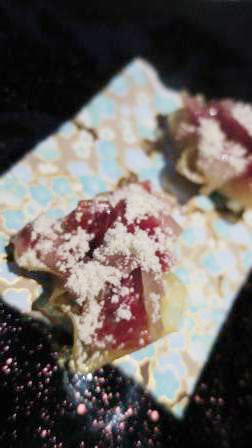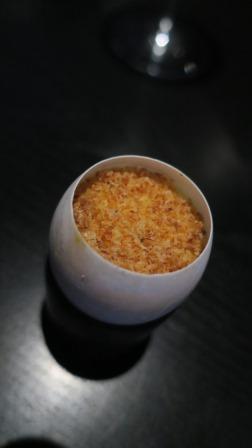The possibilities of Shochu
By Yuji Matsumoto
While sparkling wine and flavored wine is no doubt popular, another surprisingly popular beverage is shochu (distilled liquor).
Shochu on-the-rocks, mixed with lemon soda or with Calpis soda are also popular among American consumers.
From the restaurant side’s perspective, especially in California, the greatest advantage of selling shochu is that despite being a distilled liquor, as long as the alcohol level is less than 24 percent, shochu can still be sold with a Beer & Wine license. Surprisingly however, few restaurants are effectively incorporating shochu into their alcohol list. Judging from the response from customer, it seems as if more participants were interested in purchasing shochu than Japanese sake, which means there are still great sales opportunities for shochu.
Even without a bartender, shochu highball can be easily prepared by mixing shochu with lemon juice, grape juice, lychee juice and carbonated water, with high profit rate. There is no difficult explanation involved other than “Japanese vodka” for easy understanding and acceptance by American consumers.
Also, maritinis, mojitos, Bloody Mary, and various other vodka and tequila-based cocktails can be made with shochu. Therefore, I look forward to more American consumers trying shochu.
焼酎の可能性
発泡酒やフレイバー酒は言うまでもなく人気だが、意外にも焼酎が好評だ。
焼酎はロックやレモン割り、カルピス割りどれもアメリカ人にうける。
レストラン側から見ると、特にカリフォルニア州では、蒸留酒にもかかわらずアルコール24%以下ならBeer & Wineライセンスでも販売できるのが最大のメリットだ。しかし、現場をみるとこの焼酎を有効的に活用しているレストランは意外と少ない。お客の反応からみると日本酒を買って帰る人より焼酎を購入したい人が多いということは、販促によってまだ伸びる可能性があるということだ。
バーテンダーがいなくても、レモンジュース、グレープジュース、ライチジュースと炭酸で簡単に利益率の高いカクテル(酎ハイ)ができる。
何も焼酎を難しく説明することはなく、単に“Japanese Vodka”と言えば簡単に理解され、アメリカ人に受け入れられる。
このほかにマティーニやモヒト、さらには、Bloody Maryなどウォッカ やテキーラで作れるほとんどのカクテルが焼酎で出来るのでぜひ試されたい。
日本燒酒的可能性
不言而喻,發泡酒和加香酒很受歡迎;但令人驚訝的是,日本燒酒亦廣獲好評。
加冰塊、檸檬或可爾必思的日本燒酒均獲美國人好評。
以餐廳的角度而言——特別是在加利福尼亞州——最大的優勢是在於儘管其歸屬於蒸餾酒;但因其酒精成分只有24%或以下,故只須持有啤酒及葡萄酒許可證,即可販賣之。然而感到意外的是,去到當地時會發現很少餐館能夠有效地利用這些日本燒酒。從客戶的反應來看,與購買日本酒回家的人比較,更多人希望購買日本燒酒;所以根據促銷活動的展開,日本燒酒的銷售量仍大有可能增加。
即使沒有調酒師,一樣可以利用檸檬汁,葡萄汁,荔枝汁和碳酸輕鬆製作高利潤的雞尾酒(日式highball,即日本燒酒摻汽水)。
無須複雜艱難地解釋何謂日本燒酒;只需簡單地說「日本伏特加」,即可簡單容易獲美國人理解和接受。
除此之外,大多數可以用伏特加和龍舌蘭酒製作的雞尾酒——如馬丁尼和莫希托,以及血腥瑪麗等——都可以用日本燒酒製作,請務必一試。
소주의 가능성
발포주와 플레이버주는 늘 인기를 끌고 있는데 의외로 소주도 좋은 평가를 받고 있습니다.
소주는 온더록이나 레몬와리, 칼피스와리 모두 미국 사람들에게 인기가 있다.
레스토랑 입장에서 보면, 특히 캘리포니아주에서는, 증류주라도 알코올이 24% 이하면 Beer & Wine 라이센스로도 판매할 수 있어 큰 메리트가 있습니다. 그러나 실제 이 소주를 효과적으로 활용하는 레스토랑은 의외로 적습니다. 고객의 반응을 보면 니혼슈를 사가는 사람보다 소주를 구입하려는 사람이 많은데, 판촉만 제대로 한다면 아직도 성장 가능성이 있다고 볼 수 있습니다.
바텐더가 없어도 레몬주스, 포도주스, 리치주스와 탄산으로 높은 마진의 칵테일 (츄하이)을 간단히 만들 수 있습니다.
소주를 어렵게 설명하지 말고 간단히 "Japanese Vodka" 라고 소개하면 미국 사람들도 쉽게 이해하고 받아들일 수 있습니다.
이것 말고도 마티니나 모히토, Bloody Mary 같은 보드카나 데킬라로 만드는 대부분의 칵테일도 소주로 만들 수 있으니 꼭 시도해보시기 바랍니다.
While sparkling wine and flavored wine is no doubt popular, another surprisingly popular beverage is shochu (distilled liquor).
Shochu on-the-rocks, mixed with lemon soda or with Calpis soda are also popular among American consumers.
From the restaurant side’s perspective, especially in California, the greatest advantage of selling shochu is that despite being a distilled liquor, as long as the alcohol level is less than 24 percent, shochu can still be sold with a Beer & Wine license. Surprisingly however, few restaurants are effectively incorporating shochu into their alcohol list. Judging from the response from customer, it seems as if more participants were interested in purchasing shochu than Japanese sake, which means there are still great sales opportunities for shochu.
Even without a bartender, shochu highball can be easily prepared by mixing shochu with lemon juice, grape juice, lychee juice and carbonated water, with high profit rate. There is no difficult explanation involved other than “Japanese vodka” for easy understanding and acceptance by American consumers.
Also, maritinis, mojitos, Bloody Mary, and various other vodka and tequila-based cocktails can be made with shochu. Therefore, I look forward to more American consumers trying shochu.
焼酎の可能性
発泡酒やフレイバー酒は言うまでもなく人気だが、意外にも焼酎が好評だ。
焼酎はロックやレモン割り、カルピス割りどれもアメリカ人にうける。
レストラン側から見ると、特にカリフォルニア州では、蒸留酒にもかかわらずアルコール24%以下ならBeer & Wineライセンスでも販売できるのが最大のメリットだ。しかし、現場をみるとこの焼酎を有効的に活用しているレストランは意外と少ない。お客の反応からみると日本酒を買って帰る人より焼酎を購入したい人が多いということは、販促によってまだ伸びる可能性があるということだ。
バーテンダーがいなくても、レモンジュース、グレープジュース、ライチジュースと炭酸で簡単に利益率の高いカクテル(酎ハイ)ができる。
何も焼酎を難しく説明することはなく、単に“Japanese Vodka”と言えば簡単に理解され、アメリカ人に受け入れられる。
このほかにマティーニやモヒト、さらには、Bloody Maryなどウォッカ やテキーラで作れるほとんどのカクテルが焼酎で出来るのでぜひ試されたい。
日本燒酒的可能性
不言而喻,發泡酒和加香酒很受歡迎;但令人驚訝的是,日本燒酒亦廣獲好評。
加冰塊、檸檬或可爾必思的日本燒酒均獲美國人好評。
以餐廳的角度而言——特別是在加利福尼亞州——最大的優勢是在於儘管其歸屬於蒸餾酒;但因其酒精成分只有24%或以下,故只須持有啤酒及葡萄酒許可證,即可販賣之。然而感到意外的是,去到當地時會發現很少餐館能夠有效地利用這些日本燒酒。從客戶的反應來看,與購買日本酒回家的人比較,更多人希望購買日本燒酒;所以根據促銷活動的展開,日本燒酒的銷售量仍大有可能增加。
即使沒有調酒師,一樣可以利用檸檬汁,葡萄汁,荔枝汁和碳酸輕鬆製作高利潤的雞尾酒(日式highball,即日本燒酒摻汽水)。
無須複雜艱難地解釋何謂日本燒酒;只需簡單地說「日本伏特加」,即可簡單容易獲美國人理解和接受。
除此之外,大多數可以用伏特加和龍舌蘭酒製作的雞尾酒——如馬丁尼和莫希托,以及血腥瑪麗等——都可以用日本燒酒製作,請務必一試。
소주의 가능성
발포주와 플레이버주는 늘 인기를 끌고 있는데 의외로 소주도 좋은 평가를 받고 있습니다.
소주는 온더록이나 레몬와리, 칼피스와리 모두 미국 사람들에게 인기가 있다.
레스토랑 입장에서 보면, 특히 캘리포니아주에서는, 증류주라도 알코올이 24% 이하면 Beer & Wine 라이센스로도 판매할 수 있어 큰 메리트가 있습니다. 그러나 실제 이 소주를 효과적으로 활용하는 레스토랑은 의외로 적습니다. 고객의 반응을 보면 니혼슈를 사가는 사람보다 소주를 구입하려는 사람이 많은데, 판촉만 제대로 한다면 아직도 성장 가능성이 있다고 볼 수 있습니다.
바텐더가 없어도 레몬주스, 포도주스, 리치주스와 탄산으로 높은 마진의 칵테일 (츄하이)을 간단히 만들 수 있습니다.
소주를 어렵게 설명하지 말고 간단히 "Japanese Vodka" 라고 소개하면 미국 사람들도 쉽게 이해하고 받아들일 수 있습니다.
이것 말고도 마티니나 모히토, Bloody Mary 같은 보드카나 데킬라로 만드는 대부분의 칵테일도 소주로 만들 수 있으니 꼭 시도해보시기 바랍니다.






